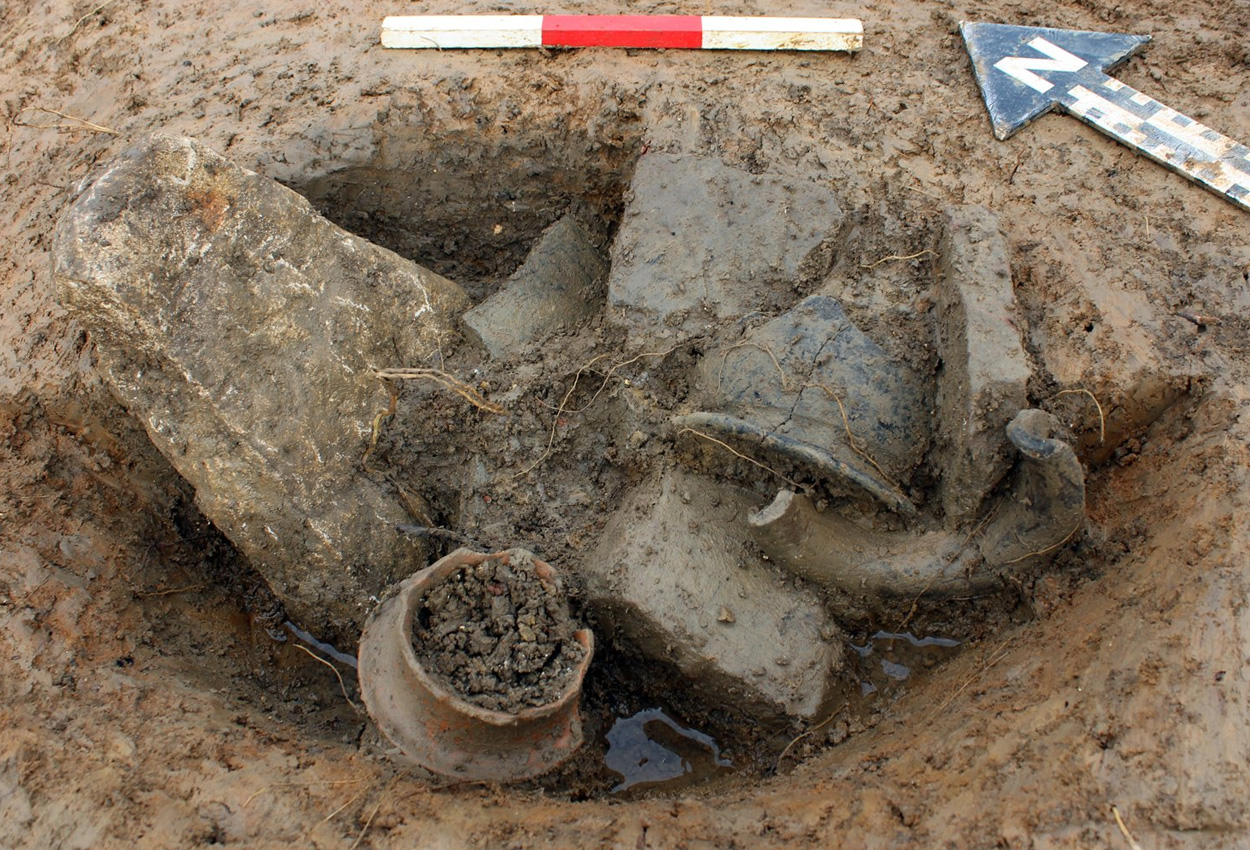Archaeologists from Cotswold Archaeology have uncovered significant Roman remains during investigations at the Centre Severn development site in Barnwood, a suburb of Gloucester, England.
Located beside the Horsbere Brook, a tributary of the River Severn, initial geophysical surveys and trial trenching had suggested the presence of archaeological remains beneath the surface.
Excavations by Cotswold Archaeology have sound significant Roman remains, such as enclosures and buildings from a larger Roman settlement that was inhabited from the 2nd to 4th centuries AD.
The most notable discovery is an exceptionally well-preserved Roman limekiln measuring four metres across and standing at two metres tall.
Constructed from stone blocks set into clay, the kiln features an internal ledge and partition to improve airflow during the lime-burning process for producing quicklime (calcium oxide), a key ingredient in Roman mortar, plaster, and concrete.
According to a press statement by Cotswold Archaeology: “The Roman limekiln appears to have had a relatively short working life. After it fell out of use, it was either dismantled or collapsed naturally. The chamber filled with rubble and was gradually covered by silting deposits. Later Roman activity cut a ditch through its north-eastern side, further confirming that it was abandoned by the 3rd century.”
Due to the strategic location of the site to the limestone deposits in the Cotswolds and fuel sources from the Forest of Dean, it is likely that the kiln supplied quicklime for the construction of nearby Roman settlements such as Glevum (Gloucester) and Corinium (Cirencester).
Archaeologists also discovered a pit containing an intentionally placed group of pottery. “This is likely an example of ‘structured deposition’, where items were purposefully buried for cultural, religious, or social reasons, rather than simply discarded,” said Cotswold Archaeology.
Header Image Credit : Cotswold Archaeology
Sources : Cotswold Archaeology





